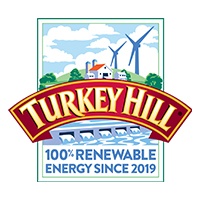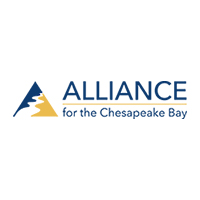
What do you do when you notice a problem but the people in power aren’t doing enough to address it? The citizens surrounding the Chesapeake Bay took it upon themselves to take action into their own hands, which meant starting an organization that still impacts the Bay, and even local businesses, almost 50 years later.
Alliance for the Chesapeake Bay began in 1971 when people in the Chesapeake Bay community were worried about the “declining ‘state of the Bay’ and lack of political commitment to address it,” according to their website. The organization focuses on cleaning up the areas the that run into the Bay, like removing trash from nearby streams and rivers or improving the landscapes that flow into these waters. Now, this group is one of the oldest and most well-respected non-profits working to protect and restore the Chesapeake Bay watershed.
The Alliance operates across six states in major cities surrounding the Bay, like Washington, D.C., Annapolis, Maryland, Richmond, Virginia and Lancaster, Pennsylvania, to improve the lands and waters in the area. One program within the organization targets involvement of and within businesses to motivate them to see their impact on the Bay. This stewardship plan is aptly called Businesses for the Bay.
More than 17.5 million people live in the Chesapeake Bay, which filters over 75% of the drinking water for people in the area, according to the B4B website. Therefore, the health of the Bay is linked to the health of the community. B4B says that the Bay is “dangerously out of balance,” which puts its long-term health in question.
Kate Fritz with The Alliance says the largest causes of pollution the organization is trying to combat are non-point sources, such as rainwater coming off of farm fields, and litter. One stormwater solution involves working on agricultural land to prevent pollution from running into local rivers and streams that lead into the Bay. For example, planting tree buffers on a farm prevents manure from entering streams.
In regards to trash, they work with the public and businesses to engage citizens to clean up litter and learn about how it can negatively impact the local waters and communities. For example, Project Clean Stream brings tens of thousands of volunteers together every year to pick up trash from local streams, creeks, rivers, parks and neighborhoods. In 2019, more than 50,000 volunteers across thousands of cleanup sites surrounding the Bay brought in about 2.5 million pounds of trash.
B4B uses a membership association to help companies understand and achieve their environmental goals. They provide educational content about the Chesapeake Bay through resources like webinars and encourage local businesses to inspire volunteerism among their employees.
According to their website, some ways a company can take action include:
On a larger scale, B4B is currently working with large dairy producers, like Turkey Hill Dairy, to implement green farming practices. Turkey Hill Dairy has created a conservation plan, which focuses on reducing topsoil runoff into streams that lead into the Chesapeake Bay. The plan requires all 136 farmers that supply milk to their factory to acquire this updated conservation plan.
The Alliance is helping these farmers pay for the planning aspects of the partnership through grants so they can implement these sustainable practices. So far, a partnership between The Alliance, Turkey Hill Dairy and Maryland & Virginia Milk Producers Cooperative Association has secured $1.5 million to support dairy producers in this mission for clean water. Andrea Nikolaus with Turkey Hill Dairy says the company is grateful to the other two organizations for their help in supporting dairy producers to make positive changes for clean water.
“The partnership represents a paradigm shift in accelerating conservation action and furthers the company’s commitment to continuous and meaningful sustainability efforts that preserve and improve the environment and minimize our impact on the world.”
Andrea Nikolaus, Public Relations & Digital Coordinator | Turkey Hill Dairy

Photo courtesy of The Alliance.
Fritz says The Alliance works with businesses to achieve their environmental goals because it believes that they are part of the solution for a cleaner Chesapeake Bay.
“Our work through Businesses for the Bay has enabled us to help different businesses, at different scales and industries, to improve their own water footprints, whether that’s through coordinating a Project Clean Stream event with their associates or working sustainability into their supply chains and procedures, like with Turkey Hill Dairy.”
Kate Fritz, Executive Director | Alliance for the Chesapeake Bay
“Research shows that corporate responsibility, including environmental sustainability, has become a crucial part of business success,” the B4B website says.
Fritz’s biggest piece advice to companies looking to improve their environmental goals is to just do something. From small acts like eliminating disposable products from the office to group events like planting native plants to your area, commit to doing something and get the ball rolling.
Recommended reading: The Ultimate Guide to Planning a Successful Community Cleanup
|

